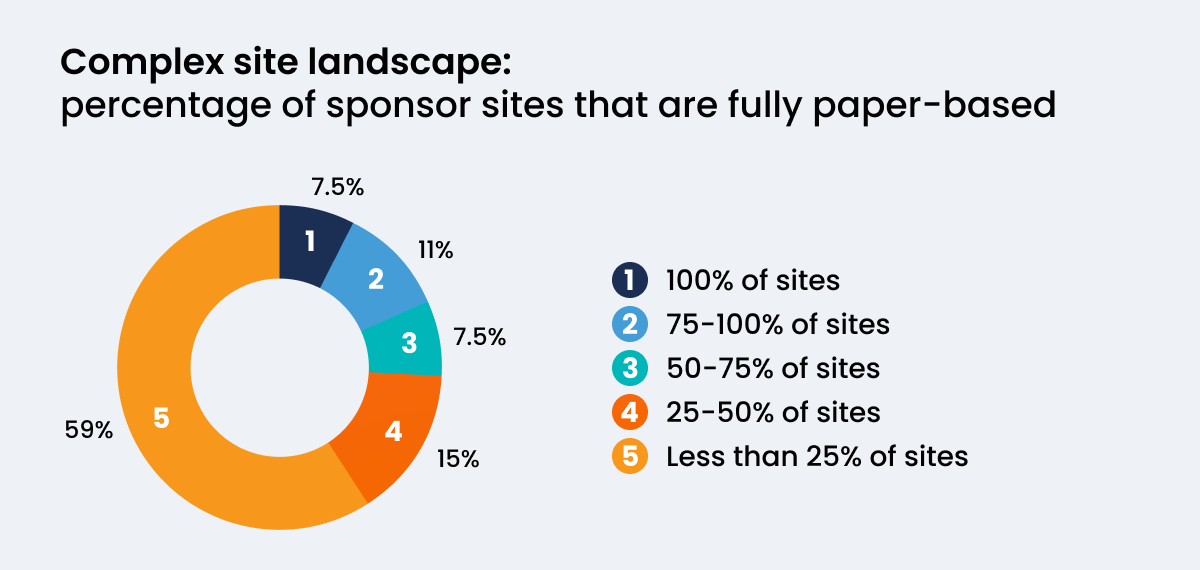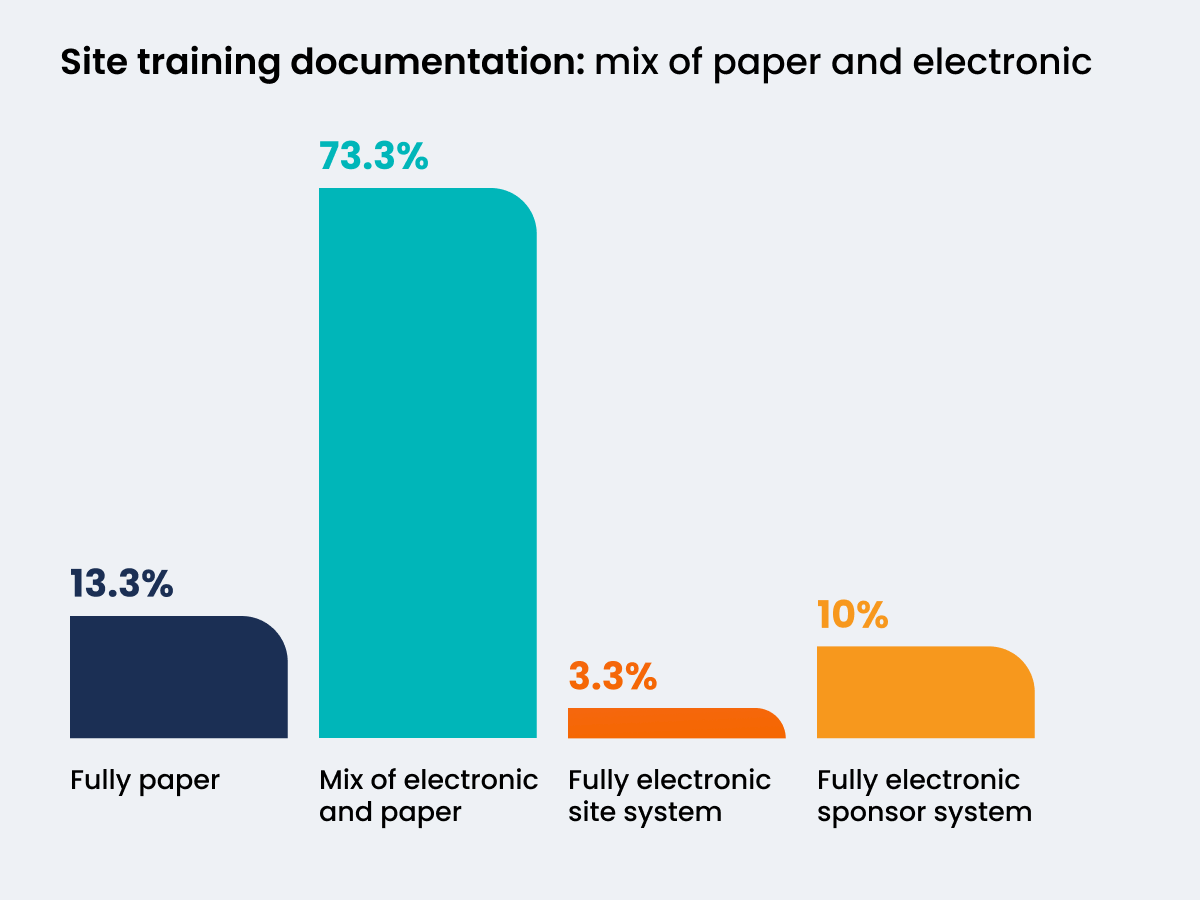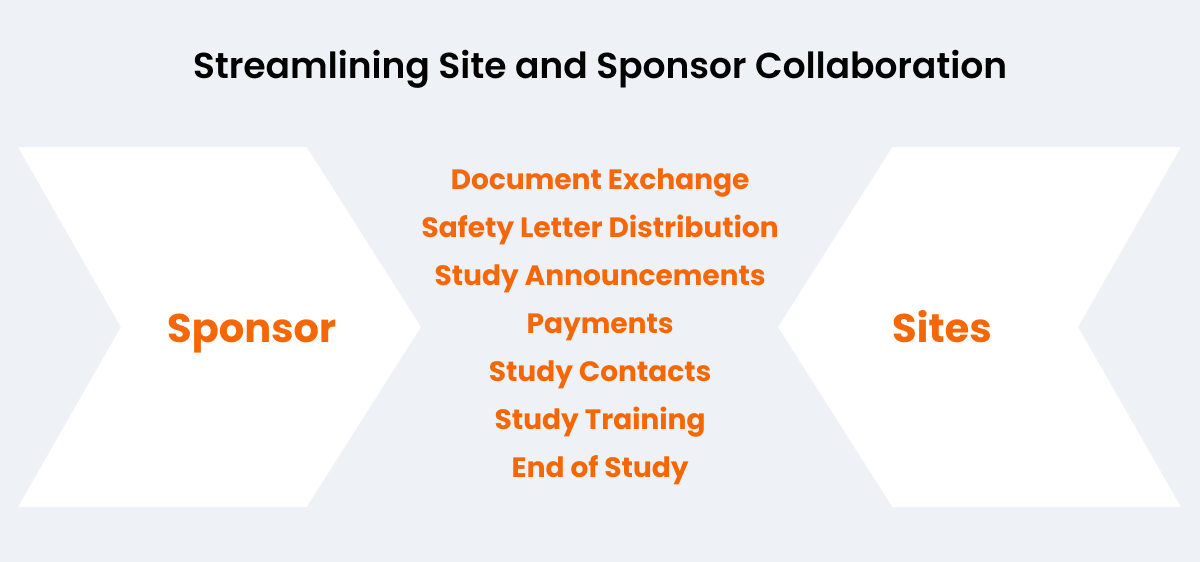Blog
How a Top 20 Pharma Engages Clinical Research Sites to Improve Trial Execution
Sep 18, 2024 | Gareth Sully
Sep 18, 2024 | Gareth Sully
In the past five years, a surge of new technology has aimed to improve clinical research site engagement and trial execution. However, these well-intentioned solutions are often custom, standalone apps that require complex middleware and integrations. This forces sites to adopt dozens of sponsor-specific tools and build customized processes around them, increasing site burden with manual and error-prone processes. Site staff have less time and energy for patient engagement and oversight — critical aspects of successful clinical trials.
In a recent poll of industry professionals, most sponsor respondents said they still send paper to sites for document exchange, end-of-study media, and safety distribution.

These challenges are compounded in the high-stakes process of study training, where the timely and complete execution of training is critical not only for initiating clinical trials faster but also for maintaining overall patient oversight, which sponsors often track in spreadsheets. Missing study training documentation can lead to critical inspection findings, resulting in commercialization delays and lost revenue. The potential cost of receiving an FDA Form 483 can easily top $250,000.

Although most sponsors understand the importance of improving site engagement, it can be challenging to implement holistic strategies that don’t add to existing technology siloes. Two clinical operations leaders at a top 20 pharma are leading the charge to improve global site engagement at their organization. They recently shared their strategies for improving site collaboration and training despite these industry challenges.
Creating a holistic site engagement strategy
Before implementing Veeva Vault Study Training and Site Connect to streamline site engagement, the pharma’s leaders struggled with manual processes in their site interactions. “You would see a room full of binders with case report forms, investigator site files, hundreds of pieces of paper all hand-delivered by the CRA or couriered to the site,” remembers the head of clinical trial management. “From paper logs to Excel trackers, every process was manual and time-consuming.”
The company’s global clinical capability strategy lead — who oversees study-specific training — struggled with similar inefficiencies in training. These inefficiencies led to high costs and additional burden on sites. “We were flying doctors around the world to spend entire days in meeting rooms presenting slide decks,” she explains. “Not only did we need to document our training with wet-ink signatures, but we also had no oversight or true understanding of our site staff’s actual learning needs. We didn’t even know if our training was effective.”
They knew they needed to make a change. Their goals were to:
- Reduce costs
- Use resources more efficiently
- Improve compliance
- Accelerate study start-up
- Improve site collaboration
Above all, they wanted to make processes easier for their sites. “Sites need to be able to spend most of their time with patients, not completing our training,” says the clinical strategy lead.
Improving clinical research site collaboration
The pharma was an early adopter of Site Connect, which streamlines clinical trial execution for sites and sponsors, going live with the system in 2020. Currently, all new studies use Site Connect for document exchange, safety letter distribution, and end-of-study media. Sites no longer have to rely on manual and error-prone methods like fax, couriers, and email. They can also easily access the training they need to stay compliant within the same interface.
“We’re excited that Site Connect is accessible for all sites and enables choice in their eISF solution. It will allow us to standardize our processes while increasing flexibility for sites,” says the head of clinical trial management.
Streamlining study training and enhancing oversight
Since implementing Vault Study Training — which simplifies training with one application for sponsors, CROs, and sites — the clinical strategy lead has shifted her study training approach to make things easier for site staff.
The team uses a layered training approach. First, they use recorded modules to share foundational study information like protocols. “With Vault Study Training, site staff can watch these trainings at a time that works best for them – on their way to work, for example,” she says. Then, they use CRA interactions to allow site staff to ask questions. “It allows us to see if they’ve grasped the point, or if there are certain points in the training we need to reiterate.”
Since making the switch to centralized study training, the strategy lead particularly appreciates the oversight she has. “Vault Study Training gives us a full, automated, end-to-end process in a validated system,” she explains. The company also leverages clinical information like site readiness status in its study training.

Ultimately, their long-term vision for site engagement includes:
- Single login to give site staff easy access to all sponsor technologies through one ID
- Consistent user experience across trial activities like document exchange and study training
- Streamlined information and data exchange to improve site collaboration
A scalable blueprint for site engagement
Now that they’ve laid the groundwork for further innovation, the team is looking forward to continuing their site engagement journey. They’ve created a scalable blueprint to automate study training, simplify information sharing, and reduce site burden.
“This gives us the chance to think differently and ask some big questions. We can ask ourselves: is the dream to stop all paper? If that’s our goal, when will we get there?” the head of clinical trial management says. Ultimately, their team has found that making a strategic effort to engage sites is the key to streamlining study execution.
See how you can enable one place for sites and sponsors to work together with Veeva Site Connect.